herbalist
The Powerful Properties Of Lavender And Sea Salt
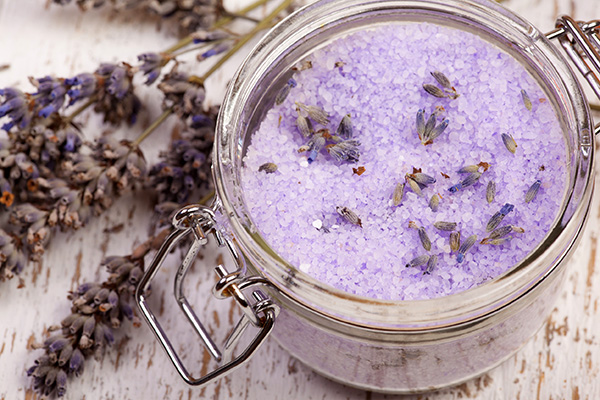 If you’re looking for natural, organic ingredients to purify, cleanse and detoxify yourself and your space, there’s no better choice than lavender and sea salt.
If you’re looking for natural, organic ingredients to purify, cleanse and detoxify yourself and your space, there’s no better choice than lavender and sea salt.
These two ingredients are relatively inexpensive and easily found. You can even make potpourri or enjoy a relaxing bath with homemade salts without breaking the bank.
Depending on your preference, and its intended use, you may wish to obtain your lavender in crushed or essential oil form. Either can be found at an esoteric or herbal shop.
In crushed (flower) form, lavender is well-known for its aromatic quality and can be mixed with another floral scent if preferred. Lavender is also famous for its autoimmune properties and ability to stimulate mental clarity, including psychic ability.
If you like the scent of lavender, as so many do, consider buying it for multiple locations: your bath; a sachet for your pillow to assist in dreamwork; and a vial of essential oil for the nightstand.
Lavender is a cleansing herb; its name comes from the French word meaning “to clean”.
We all look for quick fixes in life to detoxify and relax, and there’s no better way than this herb which has been used for centuries. For those who practice psychic work, it is a must-have. Just be sure to test yourself for allergies first!
Power And Protection From Your Ancestors
 I come from a long line of female herbalists of European origins on my mother’s side of the family. They were seers, healers, and prophets who combined their psychic gifts with ancient healing practices. Today, they still come to me during meditation, to offer wisdom.
I come from a long line of female herbalists of European origins on my mother’s side of the family. They were seers, healers, and prophets who combined their psychic gifts with ancient healing practices. Today, they still come to me during meditation, to offer wisdom.
The family’s mainly Germanic connection is one I’ve researched for many years, but more recently I discovered that my ancestors crossed into Scandinavian and Norse territories too, which suggests a bloodline of fierce women who were warriors of their time.
It’s really not surprising to me, as even my own mother today, who is 84 years old, can still kick anyone’s butt who crosses her path in an unkind way! I always knew she was strong when I was little, and I always admired her power and independence.
I was born in the year 1966, which in Chinese Astrology equates to the year of the Fire Horse. Fire Horse people are only born once every six decades. It is a rare sign and, according to legend, many girl babies born in certain parts of Asia in that year were killed at birth, because they were believed to be dangerous, uncontrollable or resistant to rules or dogma.
My Fire Horse nature shows up in me from time to time, but only when I’m really pushed beyond reason by someone who is taking advantage of, or harming me, or my children.
Life will sometimes push us to step into our core strength and fight for what is right. There are many people on the spiritual path who feel stepping into your true power or fighting for what is right is ‘unspiritual’ or egotistic.
Why Psychics, Healers And Empaths Use Essential Oils
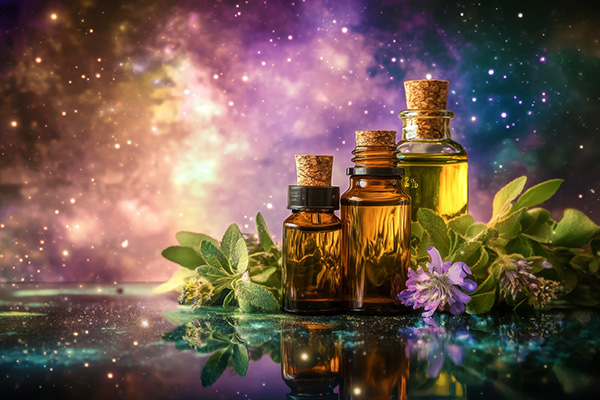 Essential oils have long been sacred allies in spiritual and healing traditions around the world. Extracted from the aromatic essence of plants, these oils carry more than just fragrance; they carry the energetic blueprint and vibrational frequency of their botanical origins.
Essential oils have long been sacred allies in spiritual and healing traditions around the world. Extracted from the aromatic essence of plants, these oils carry more than just fragrance; they carry the energetic blueprint and vibrational frequency of their botanical origins.
In spiritual practice, essential oils are potent tools for emotional alignment, energetic cleansing, and deepening our connection to the self, spirit, and earth, far surpassing their role as mere pleasant scents.
Essential oils act as bridges between the tangible and the intangible. They provide sensory cues that encourage relaxation of the body, focus of the mind, and openness of the spirit. While they don’t replace deep inner work or professional guidance, they provide gentle, supportive energy that enhances existing practices.
The use of essential oils in spiritual practices is anything but modern. Prophets, priests, shamans, and oracles across the ancient world worked with aromatic oils and resins as sacred tools to facilitate divine connection, purification, and inner vision.
In ancient Egypt and the Near East, frankincense and myrrh were revered not just for their fragrance, but for their ability to open spiritual gateways. Frankincense, often referred to as “liquid gold,” was burned in temples and used in rites of passage. Myrrh featured in sacred anointing blends and was considered essential for emotional release and spiritual attunement.
Inner Journey To The Mystical Isle Of Avalon
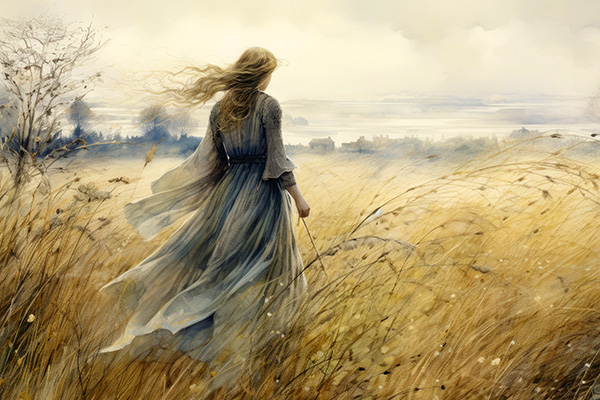 Sometimes when the pressures and demands of modern life become too much, I retreat to one of my favorite places in the universe: the mythical island of Avalon.
Sometimes when the pressures and demands of modern life become too much, I retreat to one of my favorite places in the universe: the mythical island of Avalon.
This legendary island of Celtic mythology is steeped in legends of healing, psychic learning, sacred crafting, and the life and times of King Arthur. Its name translates as “Isle of Apples,” emphasizing its association with fertility, abundance, and otherworldly beauty.
In folklore, Avalon, or Insula Avallonis, was a sanctuary of deep spiritual and psychic knowledge and was known as a training ground for pagan priestesses dedicated to the Great Mother Goddess. These women dedicated their lives to spirituality, honing their skills in clairvoyance, herbalism, weaving, and deep devotion to the Divine Feminine.
But Avalon was not only a sanctuary for women. Men were also an integral part of its story. Merlin the magician is inextricably linked to the history of the island, having trained the young Arthur there for his kingship.
Avalon is also entwined with many other tales woven through the lives of King Arthur, Guinevere, Morgan le Fay, Merlin, Nimue (the Lady of the Lake), and others. Legend also has it that King Arthur was brought to Avalon by his half-sister, Morgan le Fay, to heal after being badly wounded in battle.
The question of whether Avalon really existed straddles the line between myth and reality. Some historians and researchers speculate that Avalon may be based on a real place. Glastonbury, England, is often associated with Avalon because of its mystical aura and ties to Arthurian legend.
Honor Your Pagan Heritage This Halloween
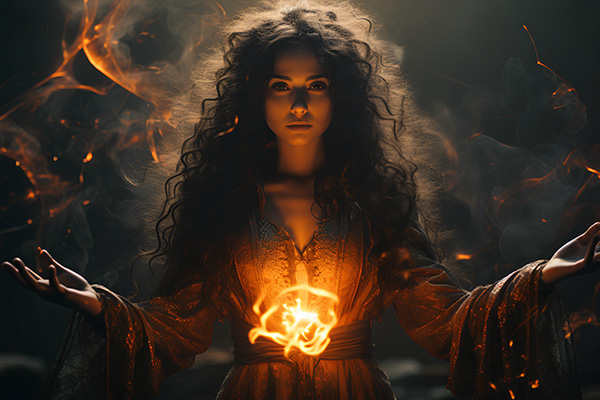 Samhain holds special significance for those who practiced paganism in a past life, especially those who were involved in magical practices as seers, soothsayers, druids, and witches.
Samhain holds special significance for those who practiced paganism in a past life, especially those who were involved in magical practices as seers, soothsayers, druids, and witches.
For us, this time of year evokes a deep sense of nostalgia, spiritual reorientation, and a return to ancient wisdom as the veil between worlds thins and we reconnect with our ancestors and the spirit realms.
Samhain is an ancient Celtic festival marking the end of the harvest season and the beginning of winter, traditionally celebrated from October 31 to November 1. It is one of the four great Gaelic seasonal festivals, along with Imbolc (February 1), Beltane (May 1), and Lughnasadh (August 1).
In Celtic tradition, Samhain (pronounced “sow-in”) is a liminal time when the boundary between the physical and spiritual worlds is thinner, allowing the spirits of our deceased loved ones, ancestors, and other spirits to cross over more easily.
In ancient times people would light fires and wear costumes to ward off harmful spirits, while also honoring their ancestors with offerings of food and drink.
Samhain is considered the origin of modern Halloween traditions, although Halloween has evolved and incorporated elements from other cultures to become a mostly secular and commercial holiday. For Neopagans and Wiccans, Samhain remains an important festival for honoring the dead, celebrating the cycle of life, death, and rebirth, and connecting more deeply with the spirit realm.
A Samhain Invitation From The Faeries
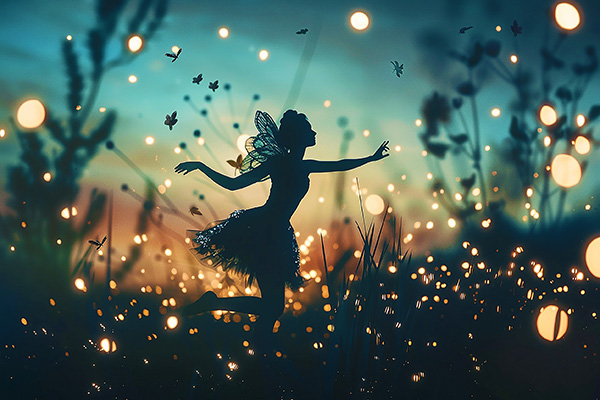 Fairies love fun and joyful games in the great outdoors, even during the darker seasons of the year. I am reminded of this every year at this time when the veil between the worlds thins during the mystical season of Samhain and Halloween.
Fairies love fun and joyful games in the great outdoors, even during the darker seasons of the year. I am reminded of this every year at this time when the veil between the worlds thins during the mystical season of Samhain and Halloween.
If you’re currently experiencing a highly creative period or feeling called to get out into nature, even if it’s just to your garden before the weather gets too cold, there’s a good chance you’re also being invited to have some fun and free-spirited playtime with the fairies.
It is easiest for us to connect with the Faeries or Fae during the times of the year when the seasonal energy portals are open at the cross-quarter holidays of the Summer and Winter Solstices and the Spring and Fall Equinoxes.
These seasonal transitions are also traditionally celebrated in the ancient pagan festivals and religious holy days of Imbolc (St. Brigid’s Day) on February 1st, Ostara (Easter) on around March 21st, Beltane (St. Walburga’s Day) on May 1st, Litha (St. John’s Day) around June 20th or 21st, Lammas (Day of Bread) on August 1st, and Samhain (All Saints’ Day) on October 31st.
Traditionally celebrated as a time to honor our ancestors and reflect on the cycle of life and death, Samhain on October 31st marks the halfway point between the Autumnal Equinox and the Winter Solstice. It is a special time that invites us to step beyond the ordinary into the realm of magic and mysticism. The lingering echoes of autumn and the approaching winter in the Northern Hemisphere also foster a sense of introspection and connection to nature, making it an optimal time to commune with the ethereal elementals of nature.
The Mystical Secrets Of Flowers
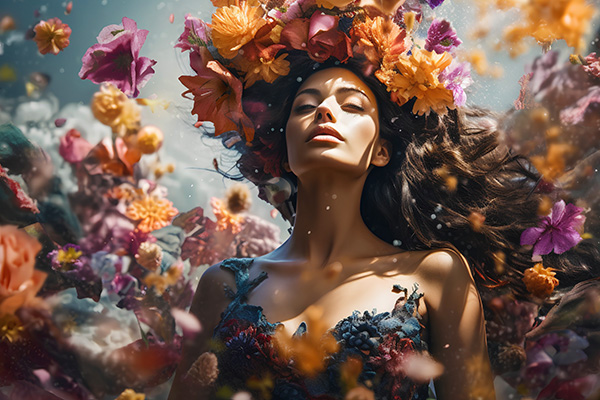 Like all living things, flowers and plants carry unique energy signatures and metaphysical properties. It’s easy to overlook them as sentient entities, but these natural wonders do possess energetic auras and have even been shown to have remarkable abilities to perceive, respond to, and remember their environment.
Like all living things, flowers and plants carry unique energy signatures and metaphysical properties. It’s easy to overlook them as sentient entities, but these natural wonders do possess energetic auras and have even been shown to have remarkable abilities to perceive, respond to, and remember their environment.
Although they do not experience emotions or memories in the way humans do, their complex responses to their environment suggest a form of intelligence that we are only beginning to understand.
Whether you believe in the sentience of flowers and plants, or simply appreciate their sophisticated survival strategies, plants undoubtedly play a vital role in our ecosystem and our lives.
If you’re serious about esoteric practices, energy work, and a spiritual lifestyle, familiarizing yourself with various plants and flowers is essential. Including them in your spiritual practice and self-care routine can bring immense benefits, from energy cleansing and healing to protection.
Flowers and plants speak to us in ways that transcend words. It’s no wonder that they traditonally play a significant role in our lives, marking celebrations from birth to death and everything in between.
Whether used for their aromatic qualities, symbolic meanings, or energetic properties, plants and flowers have also long been cherished as essential elements in spiritual and holistic practices. Their beauty, symbolism, and perceived energetic properties make them powerful tools for enhancing spiritual experiences and rituals.